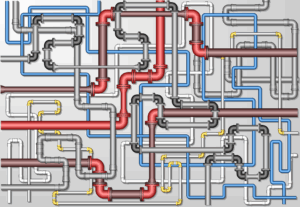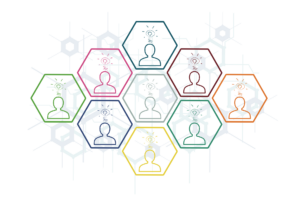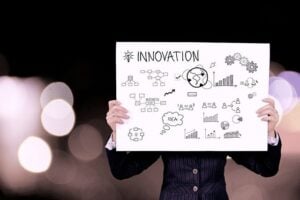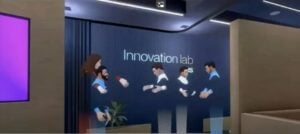Coaching Change
Executive coaching and leadership training, on a more personal level, is one road to organizational development. This is a self-development process that focuses on the executive’s enduring capabilities, assessing strengths and weaknesses and how to manage a corporate transformation and organizational change. This is a reinvention of sorts and not just merely reinforcing the executive’s skills. According to Projections’ blog on “Innovations in Organizational Development,” executive coaching is designed to help several skills when faced with the company undergoing constant change:
- Develop change agility
- Build stronger internal and external networks
- Improve the performance management process
- Enhance listening skills, including feedback
- Increase organizational member engagement
- Improve the expression of personal qualities
- Drive alignment of changing strategies
- Build or revitalize an agile, adaptive, inclusive, and positive organizational culture
- Build a strong leadership pipeline
- Effectively communicate
- Drive and support innovation and change
Effective change management underlies the ability to learn, apply and adapt to change. This applies to continuous learning. In its blog, Projections notes that leadership capabilities include imagination, empathy, resilience, teaming, social and emotional intelligence, critical thinking, adaptive thinking, and emotional intelligence. In organizational development, “leaders develop the ability to continually assess how the organization is functioning and can identify and respond with course adjustments as necessary.”
Creating A Safer Environment
In terms of leadership, when you start to talk that way and lead that way, people do feel more psychologically safe to support change and support innovation that’s happening. This highlights how companies can better facilitate a safer environment for workers to feel secure enough to take risks to develop change. Claudia Reuter, Director of the Roberts Innovation Fund at Yale University, joined Seth Adler of All Things Innovation in “Fostering Innovation” to discuss people being the centrifugal force of innovation and digital transformation. They are the glue that holds things together, and when they are put together in an environment that feels safe enough to conduct that change, innovation happens.
TMRE will be held this year from October 23-25, at the Gaylord Rockies Event & Convention Center, Denver, CO. In the session, “The Spirit, Mindset and Process of Agile Innovation,” Shilpa Khanna, Associate Director, Transformational Growth Insights, The Clorox Company, will explore developing a flexible system to adapt and allow for bigger innovation faster; the mindset of startup thinking; and the process, which includes the right players and the open toolbox.
Register for TMRE now to see the session.
Getting Organized Systematically
Organizational development refers to the deliberate and systematic efforts to enhance an organization’s capacity to adapt, change, and grow in order to achieve its goals more effectively. This system plays a significant role in supporting and benefiting innovation within an organization, as noted by ChatGPT:
- Cultivating a Culture of Innovation: Organizational development efforts can focus on fostering a culture that values and encourages innovation. This includes promoting open communication, risk-taking, creativity, and continuous learning.
- Empowering Employees: Organizational development initiatives that empower employees by delegating decision-making authority, encouraging autonomy, and providing opportunities for skill development can lead to increased innovation.
- Cross-Functional Collaboration: These efforts can facilitate collaboration across different departments and teams. Cross-functional collaboration encourages the exchange of ideas, diverse perspectives, and expertise, which are essential for generating innovative solutions that address complex challenges.
- Flexible Structures and Processes: Organizational development can focus on creating flexible structures, processes, and workflows that adapt to changing needs and market conditions. Flexible structures enable quicker decision-making and the ability to pivot when pursuing innovative initiatives.
- Leadership Support and Role Modeling: Effective organizational development emphasizes leadership behaviors that support and encourage innovation. Leaders can role model innovation by valuing new ideas, providing resources, and promoting a willingness to take calculated risks.
- Learning and Development Opportunities: These initiatives provide learning and development opportunities, such as workshops, training programs, and innovation labs, which can enhance employees’ skills and creativity.
- Performance Measurement and Recognition: Organizational development can introduce performance metrics that assess and reward innovation efforts.
- Change Management and Adaptability: ODpractices help organizations navigate change more effectively. As innovation often requires change, having strong change management processes in place ensures a smoother transition when implementing new ideas and initiatives.
- Inclusive Decision-Making: It can emphasize inclusive decision-making processes where diverse voices and perspectives are considered. Inclusion leads to more well-rounded discussions, better problem-solving, and the generation of more innovative ideas.
- Alignment with Business Strategy: Organizational development ensures that innovation efforts are aligned with the organization’s overall strategic goals. This alignment prevents innovation from becoming isolated and ensures that innovative initiatives contribute to the organization’s long-term success.
- Risk Management: It can introduce structured processes for evaluating and managing risks associated with innovation. By addressing potential risks and uncertainties, organizations can better plan for potential challenges and minimize negative impacts.
The Culture Club
Organizational development and innovation are intertwined in ways that support the growth, adaptability, and overall success of an organization. By creating a culture of innovation, empowering employees, fostering collaboration, and aligning with business goals, these initiatives contribute to an environment that nurtures and benefits from innovative thinking and action.
It’s further important to chart your own path. Each organization, of course, has a unique transformation need, and leadership might be at different stages of development, and each workforce has specific needs. Yet, don’t be a “culture chameleon,” advises Tiffany Yates in the Organization Development Network’s article, “The Five Ways Organization Development Can Deliver an Innovative Culture.” Yates notes, “Organizations should delineate what outcomes they desire from a culture, define how culture can create those outcomes, create a roadmap of how to change culture over time, and implement the plan to do so. If you want an innovative culture, then intentionally design your company culture around it.”
Video courtesy of KMWorld Conference
Contributor
-

Matthew Kramer is the Digital Editor for All Things Insights & All Things Innovation. He has over 20 years of experience working in publishing and media companies, on a variety of business-to-business publications, websites and trade shows.
View all posts




































































































































































































